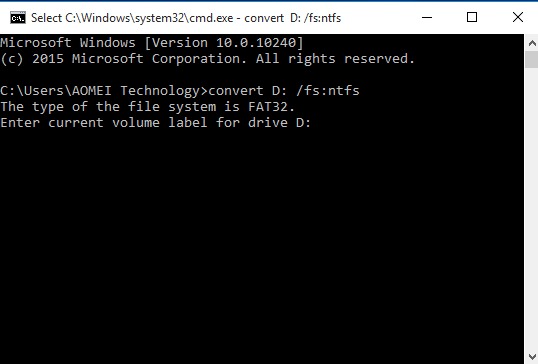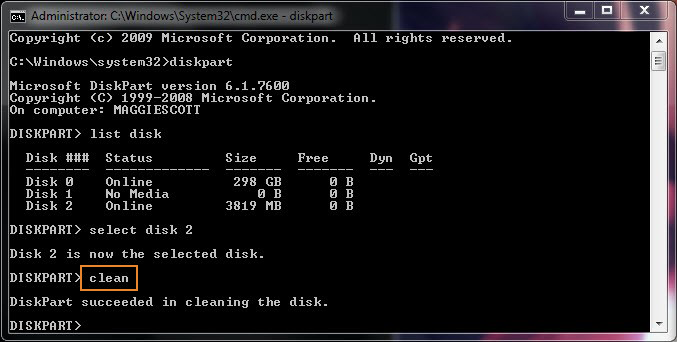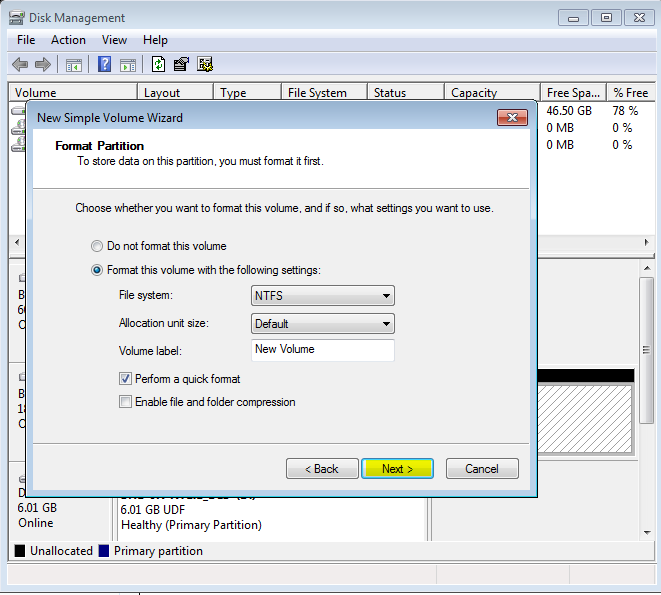

- #How to reformat external drive command line how to
- #How to reformat external drive command line full
- #How to reformat external drive command line windows 10
- #How to reformat external drive command line pro
I would do this in different steps to ensure the data is corrupted, although it will not delete the data per say. If this were me I would just use a live Linux USB and use Gparted and delete all partitions and then reformat the drive. How can I securely wipe every single partition, including hidden and reserved sections, to make sure that I'm really dealing with a clean, uninfected laptop?Įdited by RootNoot, 06 August 2018 - 04:12 PM.
#How to reformat external drive command line how to
So overall, my problem is that I don't know how to wipe absolutely everything on my drive and completely start fresh. This seems to prove that some hidden or reserved partitions must not have been wiped with Parted Magic's secure erase feature, and with the malware I was dealing with I seriously want to just completely wipe the damn thing and start over. If I wiped my hard drive on, how could most of these programs have been installed on with a few going as far back as 2016 when I first bought this laptop? That, and when I reinstalled windows 10, it didn't need me to provide my product key, so it must have found it somewhere on the drive to automatically activate. I reinstalled windows again and thought that was the end of it.īut then I started setting everything up, and for one, I noticed the same random wifis that were from the remote access trojan still appearing, and for another I installed Bulk Crap Uninstaller to remove bloatware and found that a huge number of my programs were apparently installed before I completely wiped my hard drive (screenshot attached). This time I made sure to plug in the power cable and the wipe completed. So I bought Parted Magic, booted it into my ram and ran the Secure Erase program with the enhanced overwrite enabled. So if I wanted to completely wipe the drive, including all hidden partitions, I needed to use this Secure Erase feature to do so. I thought I may have gotten lucky but looked into it more and it turns out DBAN is no longer as thorough or secure as it was according to this techlogon article:
#How to reformat external drive command line windows 10
I know this can often brick hard drives, but luckily I was able to plug in my windows 10 installation usb with no problems and run windows. So I ran DBAN and this is where I really messed up because I forgot to plug in the power chord and the computer died while it was performing the dodshort wipe.

So I looked into how to completely wipe my hard drive, and everyone recommends DBAN above all others, so I threw it on a usb and ran it (after having to revert to version 2.2.8 because they've broken the newest version since coming out with their paid options). My main concern is that, even when reinstalling an operating system, a lot of malware programs have rootkits, and since avast had found malware in its boot scan, this is very likely the case for me. I decided that the only way to make sure the malware was taken care of was to do a complete reformat of my hard drives and reinstall windows without keeping or transferring any of my old data (note: I know this sounds like it should be in the malware forums, but I'm not concerned with removing a specific malware, I'm wanting to completely reformat the drive, so I thought it went better in the disk management topic).
#How to reformat external drive command line full
I managed to get the situation under control by disconnecting from the internet and running a full system boot scan with avast and then just deleting pretty much everything on my hard drive. I had started noticing random wifi networks popping up all the time and by the time I realized what it was, it was way too late and my system was completely infected.

So my trouble started when I got some kind of remote access trojan a few months ago.

With the 64-bit Windows 10 Home os, version 1803, build 17134.165
#How to reformat external drive command line pro
I know there are a lot of ways to look up how to do this, but I have genuinely tried and failed twice now, so I could really benefit from some pro tips.


 0 kommentar(er)
0 kommentar(er)
